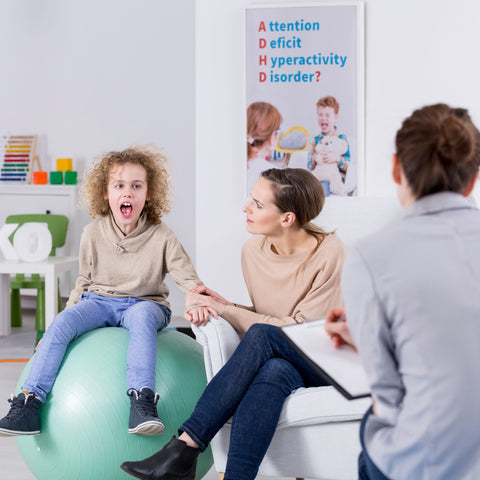ADHD in Girls: Breaking Stereotypes
ADHD, or Attention Deficit Hyperactivity Disorder, is a neurological condition that has often been associated with boys. However, it's time to break free from stereotypes and recognize that ADHD affects girls too, albeit in ways that might not conform to traditional expectations.
Myth: ADHD is Primarily a Boys' Issue Fact: Girls Also Navigate ADHD One pervasive myth is that ADHD is more common in boys. The reality? Girls experience ADHD too, but their symptoms may differ, making identification trickier. Girls might not always display the hyperactivity associated with boys, leading to underdiagnosis or misinterpretation of their challenges.
Myth: ADHD Looks the Same in Everyone Fact: Varied Expressions in Girls ADHD doesn’t follow a one-size-fits-all model. In girls, symptoms may manifest more internally, like daydreaming or struggling with organization, leading to the misconception that they're simply "spacey" or disorganized.
Myth: Girls with ADHD Are Not Intelligent Fact: ADHD Does Not Diminish Intelligence Another misconception is that ADHD impedes academic success. In truth, many girls with ADHD are highly intelligent. The challenge lies in navigating an educational system that might not always recognize and accommodate their unique learning styles.

Addressing Challenges: Recognizing and Supporting Girls with ADHD To break free from these stereotypes, it's crucial to recognize the diverse ways ADHD presents in girls. Teachers, parents, and healthcare professionals play pivotal roles in early identification and support.
1. Awareness is Key: Educate teachers, parents, and peers about the varied expressions of ADHD in girls. Increased awareness fosters an environment where girls with ADHD can receive the understanding and support they need.
2. Tailored Educational Approaches: Encourage educators to employ diverse teaching methods that accommodate different learning styles. Recognize that girls with ADHD may excel in creative or hands-on activities, showcasing intelligence beyond traditional academic metrics.
3. Supportive Environments: Create a supportive home environment that acknowledges and addresses the unique challenges faced by girls with ADHD. Open communication and understanding go a long way in helping them thrive.
ADHD in girls is a nuanced reality that demands a nuanced understanding. By breaking free from stereotypes and embracing a more inclusive perspective, we can ensure that all individuals, regardless of gender, receive the support and recognition they deserve. It's time to rewrite the narrative surrounding ADHD and empower every child to reach their full potential.
